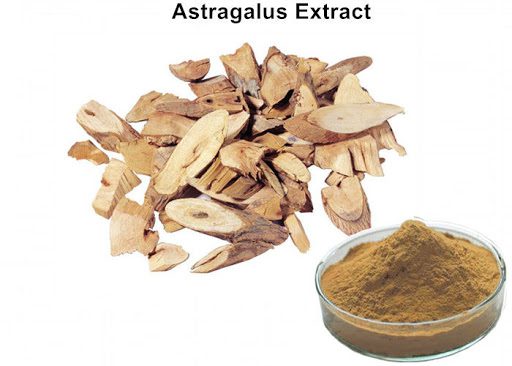Table of Contents
Cornstarch is a useful product that has various applications in food, industry, and household. It comes from the starches in corn kernels, which are separated and processed into a fine powder. Cornstarch is often seen as an eco-friendly option to synthetic materials, such as plastics and detergents. However, the production and consumption of cornstarch also have some environmental impacts that need to be considered.
Production Process
The production process of cornstarch starts with growing corn, which is an agricultural activity that requires land, water, and inputs such as fertilizers and pesticides. A study by Starch Europe reported that the average yield of corn in the EU was 7.2 tonnes per hectare in 1998, and the average energy input was 13.3 GJ per tonne of corn. The energy input includes the energy used for cultivation, harvesting, transportation, and processing of corn. The study also calculated the net consumption of carbon dioxide, which is the difference between the carbon dioxide absorbed by the corn plants during photosynthesis and the carbon dioxide emitted during the production process. The net consumption of carbon dioxide was 0.6 kg per kg of cornstarch.
The environmental impacts of corn cultivation vary depending on the type of corn, the location, the farming practices, and the use of inputs. Organic corn, which is grown without synthetic fertilizers and pesticides, may have lower environmental impacts than conventional corn, but it may also have lower yields and higher costs. A study by Thinking Sustainably showed that organic corn can reduce the runoff of nitrogen and phosphorus into waterways, which can cause eutrophication and algal blooms. However, organic corn may also require more land and water than conventional corn, which can affect the availability of these resources for other purposes.
The processing of corn into cornstarch involves several steps, such as steeping, milling, separation, refining, drying, and packaging. These steps require energy and water, and produce waste and emissions. A study by Starch Europe reported that the average energy consumption for the production of cornstarch in the EU was 2.9 GJ per tonne of cornstarch, and the average water consumption was 4.5 m3 per tonne of cornstarch. The study also reported the average emissions of air pollutants, such as carbon monoxide, nitrogen oxides, sulfur dioxide, and particulate matter, as well as the average emissions of water pollutants, such as biochemical oxygen demand, chemical oxygen demand, suspended solids, and nitrogen. The study also estimated the average solid waste generation, which includes the by-products of cornstarch production, such as gluten, germ, and fiber.
The environmental impacts of cornstarch processing depend on the type of cornstarch, the technology, the efficiency, and the waste management. Organic cornstarch, which is produced from organic corn, may have lower environmental impacts than conventional cornstarch, but it may also have lower quality and higher costs. A study by INNSpub showed that organic cornstarch can reduce the acidity and the chemical oxygen demand of the wastewater, which can improve the water quality and reduce the treatment costs. However, organic cornstarch may also have lower purity and higher moisture content than conventional cornstarch, which can affect the performance and shelf life of the product.
Consumption Patterns
The consumption patterns of cornstarch depend on the type of product, the application, and the consumer preferences. Cornstarch can be used as a food ingredient, such as a thickener, a binder, a stabilizer, or a sweetener. It can also be used as an industrial material, such as a bioplastic, a biofuel, or a textile. It can also be used as a household product, such as a detergent, a cleaner, or a personal care product. The consumption patterns of cornstarch vary by region, by country, and by culture.
The environmental impacts of cornstarch consumption depend on the type of product, the application, and the disposal. Cornstarch products can have different environmental impacts than synthetic products, depending on the life cycle stages and the comparison criteria. For example, cornstarch-based bioplastics can have lower environmental impacts than petroleum-based plastics, depending on the production, use, and end-of-life scenarios. A study by Thinking Sustainably showed that cornstarch-based bioplastics can reduce the greenhouse gas emissions, the fossil fuel consumption, and the landfill waste compared to petroleum-based plastics. However, cornstarch-based bioplastics can also have higher water consumption, lower mechanical properties, and lower biodegradability than petroleum-based plastics, depending on the conditions and the additives.
The environmental impacts of cornstarch consumption can also be influenced by the consumer behavior and the waste management. Consumers can reduce the environmental impacts of cornstarch products by choosing organic, local, and fair trade options, by using less and reusing more, by avoiding unnecessary packaging and additives, and by composting or recycling the waste. However, consumers may also face some challenges, such as the availability, the affordability, the quality, and the labeling of cornstarch products, as well as the infrastructure, the regulation, and the education of waste management.
Conclusion
Cornstarch is a useful product that has various applications in food, industry, and household. It is often seen as an eco-friendly option to synthetic materials, such as plastics and detergents. However, the production and consumption of cornstarch also have some environmental impacts that need to be considered. The environmental impacts of cornstarch depend on the type of corn, the type of cornstarch, the production process, the consumption patterns, and the waste management. Organic cornstarch, which is produced from organic corn, may have lower environmental impacts than conventional cornstarch, but it may also have lower yields, lower quality, and higher costs. Consumers can reduce the environmental impacts of cornstarch products by choosing organic, local, and fair trade options, by using less and reusing more, by avoiding unnecessary packaging and additives, and by composting or recycling the waste. However, consumers may also face some challenges, such as the availability, the affordability, the quality, and the labeling of cornstarch products, as well as the infrastructure, the regulation, and the education of waste management. Therefore, cornstarch is not a perfect solution, but it can be a part of a more sustainable lifestyle.

